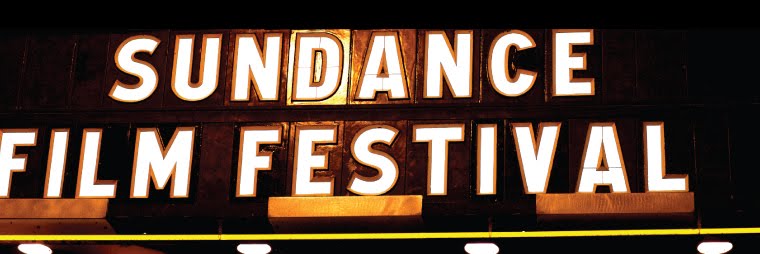So, okay, it's far behind the curve, but I finally got my Vertov source ducks in a row. Turns out, most of them were Aufderheide, which kinds of verifies my approval of that book (I liked it a lot. I tend to get lost in Barnouw).
Anyway, here's the text (guess you can't upload a document, just an image, so please excuse the formatting. It's much better in Word, I promise):
---------------
Vertov, and Man With a Movie Camera
Bio
Dziga Vertov, born Denis Kaufman, was a pioneer of documentary film within the Soviet Montage formalist movement. He gave himself the name Dziga Vertov, which means “spinning top”. His work in film began alongside the Soviet Revolution when he was 22. Vertov worked on Soviet newsreels that were distributed to the masses, including the front in the civil war, via trains that served as both distribution and exhibition means (Aufderheide, 39).
Vertov created alongside his editor, Elizaveta Svilova, whom he eventually married, as well as his brother, Mikhail Kaufman, forming a “Council of Three”. They dubbed themselves kinoks, or “cinema-eyes” (Aufderheide, 2007, p. 40). The concept of Kino-Glaz, or “Cine-Eye” was an important one to Vertov. He wrote extensively about the mechanical superiority of the lens to the human eye, and the image of a camera lens as eye show up throughout his work, including in Man With a Movie Camera. Vertov firmly believed in the capacity of the lens for truth-telling beyond what humans alone were capable of (Aufderheide, 40). However, he still reserved a critical role for the human storyteller:
“[I]t is not enough to show bits of truth on screen, separate frames of truth. These frames must be thematically organized so that the whole is also a truth.” (Barnouw, 58)
Vertov created the Kino-Pravda, or “Cine-Truth” with his kinoks, in 1922. He directed his first documentary, Kino-Glaz, in 1924, and went on to direct three more in rapid succession (Aufderheide, 41). His project during this time was to capture the truth of the world through film, and increasingly, by emphasizing the primacy of editing as the artistic manipulation intended to create effect for the audience. It is by this experimentation in editing that Vertov remains a leading figure in the Soviet Montage formalistic tradition, though he criticized others in the movement, such as Sergei Eisenstein, for the “faking” of reality in Eisenstein’s dramatic films (Aufderheide, 43).
Man With a Movie Camera
Man With a Movie Camera was Vertov’s masterwork. Based on the documentary genre, the “city symphony”, and couched within the structural framework of a theater audience attending a film, Vertov both adheres to, and contrasts from, the city documentary in very deliberate ways. Also, the inclusion of the theater audience, and the continued shots of the movie camera itself, speak to the theme of the power of film as a truth-telling medium.
In terms of the city symphony genre influence, we do get the sense of the city awakening, working, enjoying its leisure time, and then finally retiring, as is common for the genre. But Vertov breaks from this format often to create meaning in his film through the skillful use of associative editing. For example, in one sequence, Vertov collides the images of a funeral parade with the live birth of a child. In another sequence, Vertov combines shots of machinery with the happy workers who are using these machines. The meaning in the former is an abstract presentation of life going on in the Soviet Republic, while the meaning of the latter emphasizes the satisfying fruits of shared labor with machines, a common theme in Soviet propaganda.
Vertov was trying to create a new type of film, one that separated drama from story. Much of Man With a Movie Camera achieves this through experimentation, not only in story structure (or lack thereof), but in its inspired editing techniques, its use of collision, collusion, and association to create meaning, as well as in its special effects, which are used predominately throughout.
Legacy
Vertov’s experimentation might have proven to be his undoing. While he enjoyed success for a few more years, increasingly his artistic tendencies were “smothered” within the Soviet Union (Aufderheide, 43). Easier to understand films gained favor, and within a decade of Man With a Movie Camera, Vertov was back to editing newsreels.
Vertov’s legacy can be linked directly to the Cinema Verite movement within documentary, as well as the Dziga Vertov Group, which included French New Wave director Jean-Luc Godard.
Bibliography
Vertov, D. (Director). (1924). Kinoglaz (Cine-Eye) [Motion Picture].
Vertov, D. (Director). (1929). Man With a Movie Camera [Motion Picture].
Vertov, D. (Director). (1934). Three Songs About Lenin [Motion Picture].
Aufderheide, P. (2007). Documentary Film: A Very Short Introduction. New York: Oxford University Press.
Barnouw, E. (1993). Documentary: A History of the Non-Fiction Film - 2nd Revised Ed. New York: Oxford University Press.
Bordwell, D., & Thompson, K. (2008). Film Art: An Introduction - 8th Ed. New York: McGraw-Hill.
Ebert, R. (2009 йил 1-July). Man With a Movie Camera :: rogerebert.com :: Great Movies. Retrieved 2011 йил 9-January from http://rogerebert.suntimes.com/apps/pbcs.dll/article?AID=/20090701/REVIEWS08/907019993/-1/rss
MacKay, J. (n.d.). Dziga Vertov Short Biography MacKay 1. Retrieved 2011 йил 9-January from Yale: http://webcache.googleusercontent.com/search?q=cache:2CMkXK4q0dcJ:www.yale.edu/slavic/resources/download/Dziga-Vertov-Short-Biography-MacKay-1.doc+dziga+vertov+1896-1954&cd=3&hl=en&ct=clnk&gl=us&client=firefox-a/

No comments:
Post a Comment
Note: Only a member of this blog may post a comment.